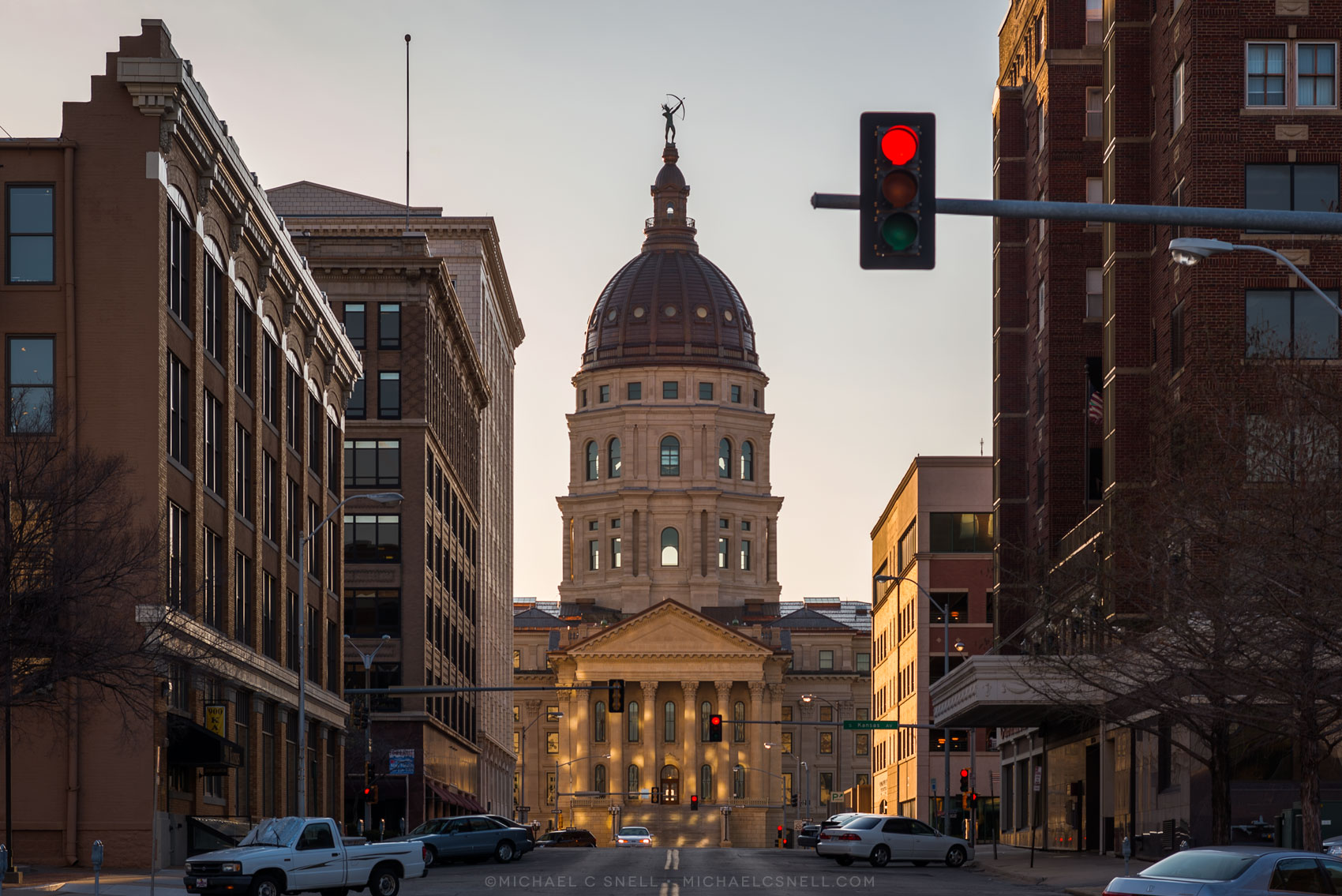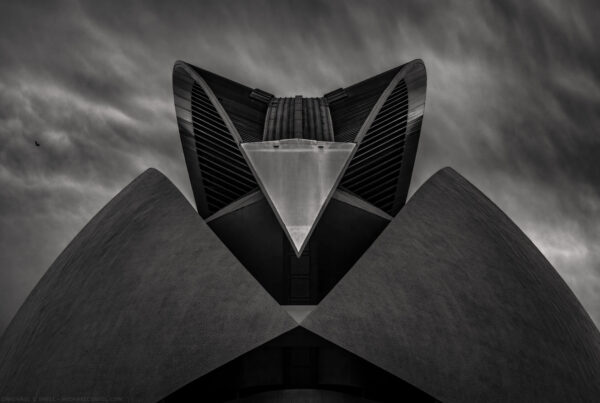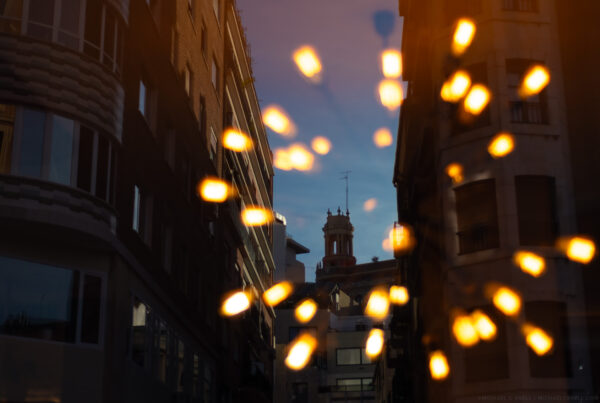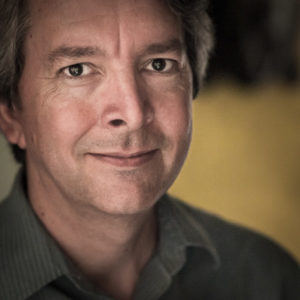I just ran across this series of images that I felt might be useful in showing how a scene changes, depending on the lens you are using. I shot all of these on 9th Street in Topeka, Kansas, where I liked how the buildings framed the State Capitol.
First up, a shot with at 26mm — reasonably wide-angle:
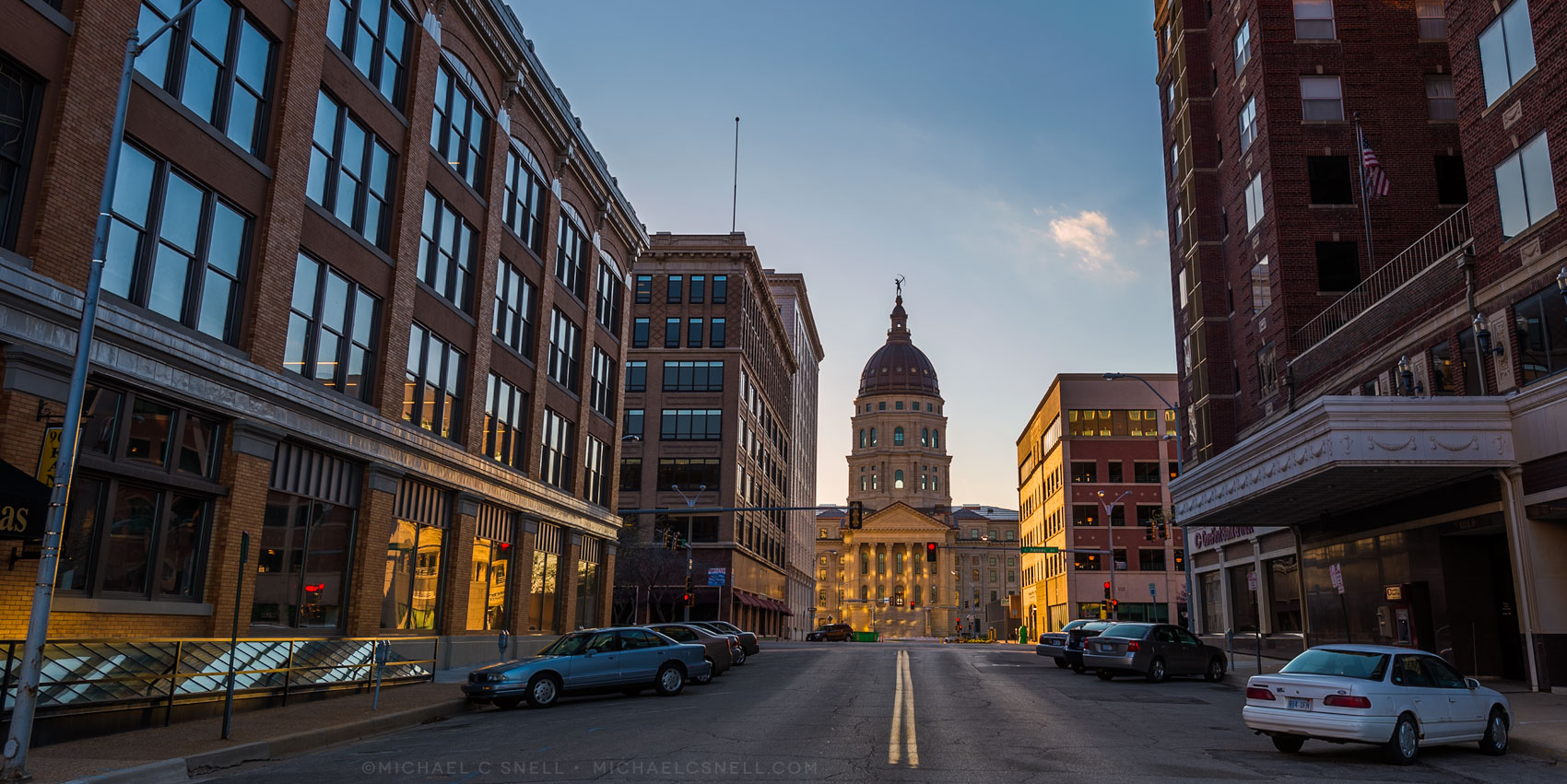
Nikon D700, Nikkor 17-35mm zoom at 26mm. (Wide angle)
The first image (above) was taken midway down the second block from the Capitol grounds. The view is wide and the Capitol actually looks fairly small, compared to the building that are lining 9th Street. There’s a little distortion where the buildings lean in because I was pointing the camera up slightly. If I had kept the camera level I could have avoided that, but I would have ended up with more pavement at the bottom of the frame. I could have also used a tilt-shift lens to remove the distortion or done it in Photoshop, but that’s not really the point so much. I’m most interested here in the visual impact of the wide angle. To me this is a shot of “downtown” that the Capitol happens to be in, but the Capitol isn’t really that impressive.
Next is a shot with at 80mm:
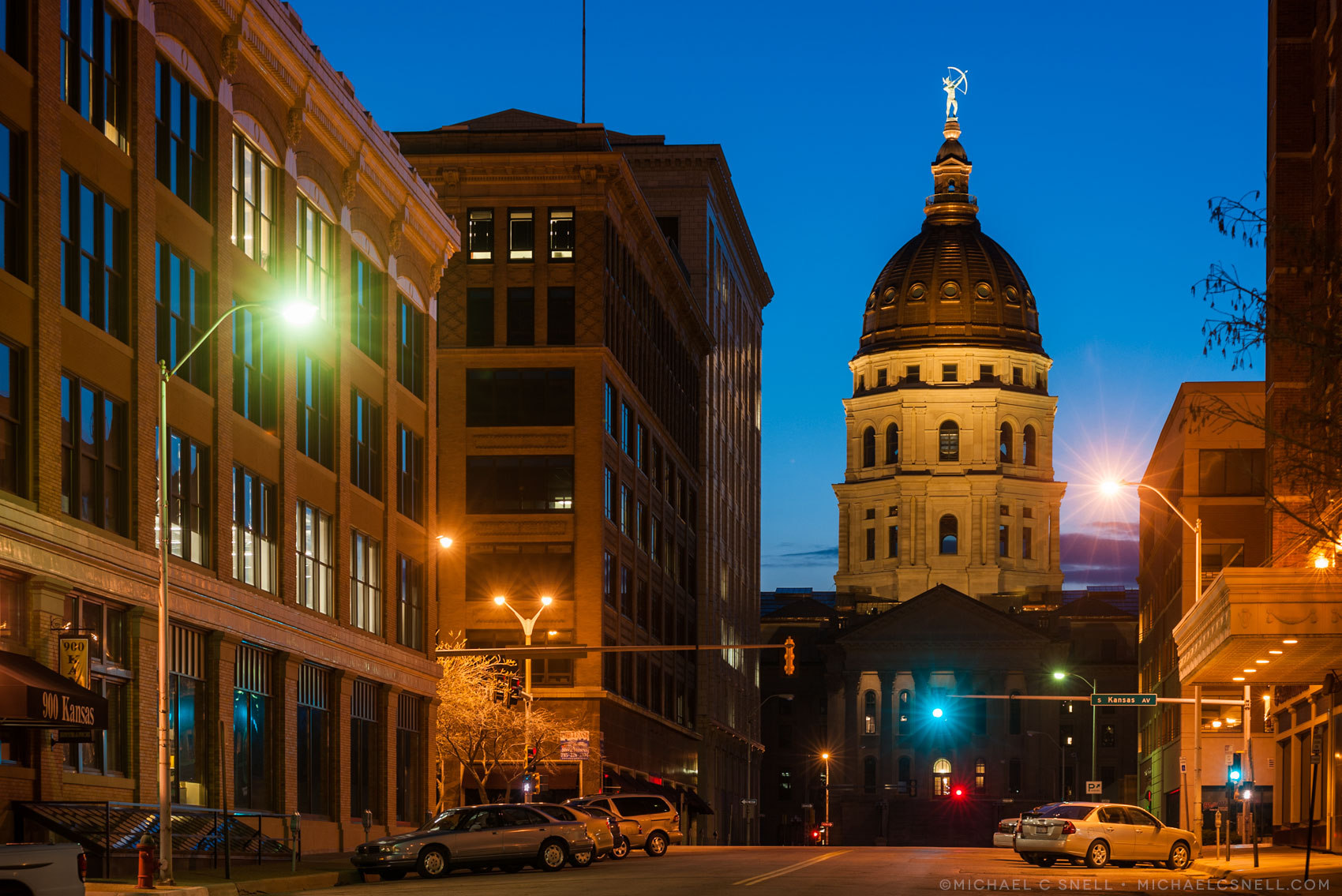
Nikon D700, Nikkor 80-200mm zoom at 80mm. (Short telephoto)
I’ve moved back a block or so and switched to a short telephoto (80mm) for this shot. You still see about the same amount of the buildings on the right and left side of the frame, but look at the relationship to the Capitol. The Capitol now looks much larger in comparison and holds its own against the other downtown buildings. This is due to the compression that comes with using a telephoto lens.
Now look at 105mm:
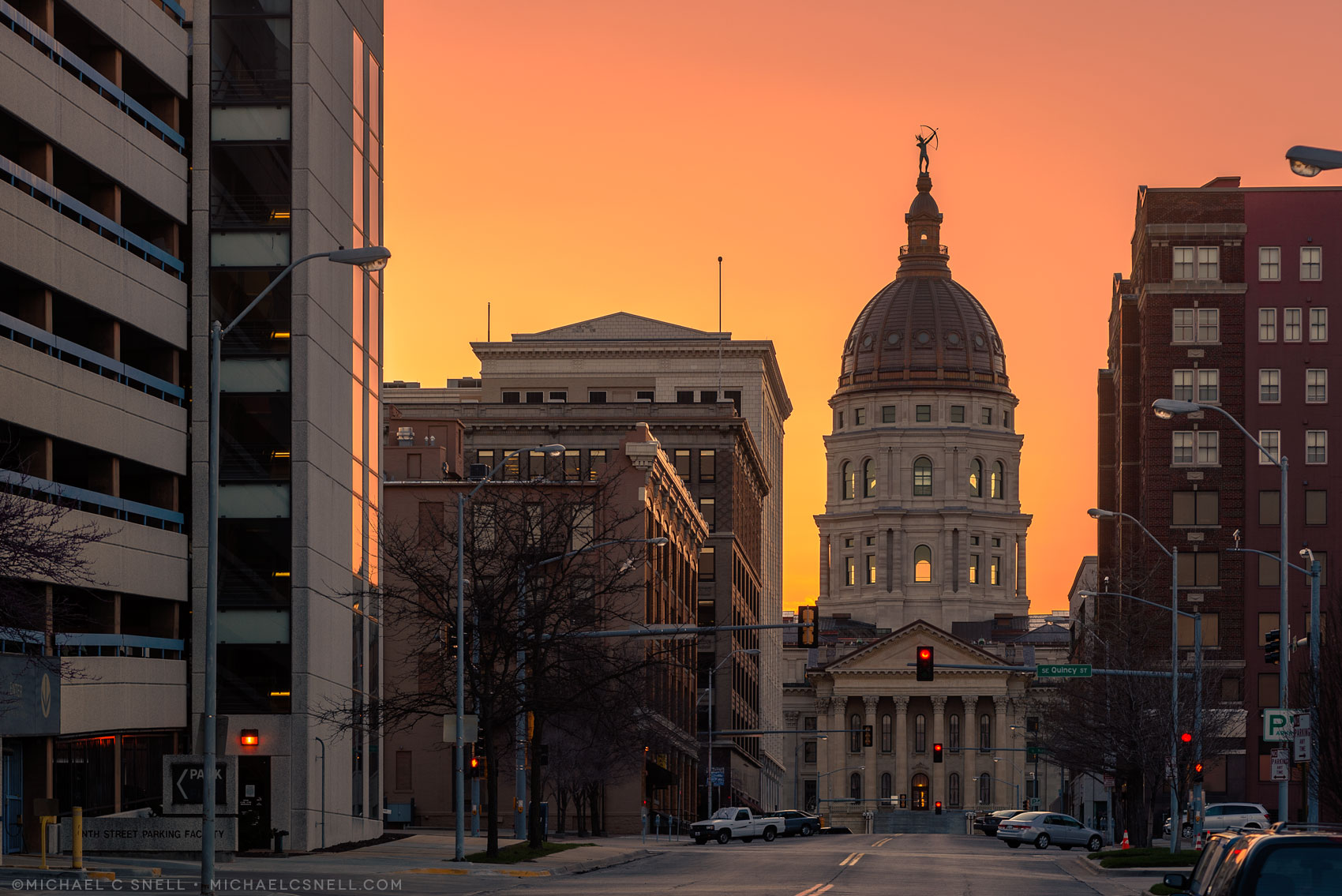
Nikon D700, Nikkor 80-200mm zoom at 105mm. (Long telephoto)
I’m now standing about three blocks from the Capitol grounds, or roughly twice as far away as I was for the first shot. I’m now seeing more buildings on the sides of the frame. The parking garage on the left was actually behind me when I shot the first frame.
The Capitol looks larger still, in this image. It now looms over the 9th Street buildings and commands the downtown area.
All of this goes to show how something as simple as choosing your lens, and where you stand, can completely change the dynamics of a scene. If you were shooting a story about downtown, then the first image would probably be well-suited. But if the story is about the Capitol, then the telephoto view creates the hero-shot you might be looking for.
Just something to think about next time you’re trying to capture what you see in front of you. You have a few simple choices available to you that can really affect your results.
